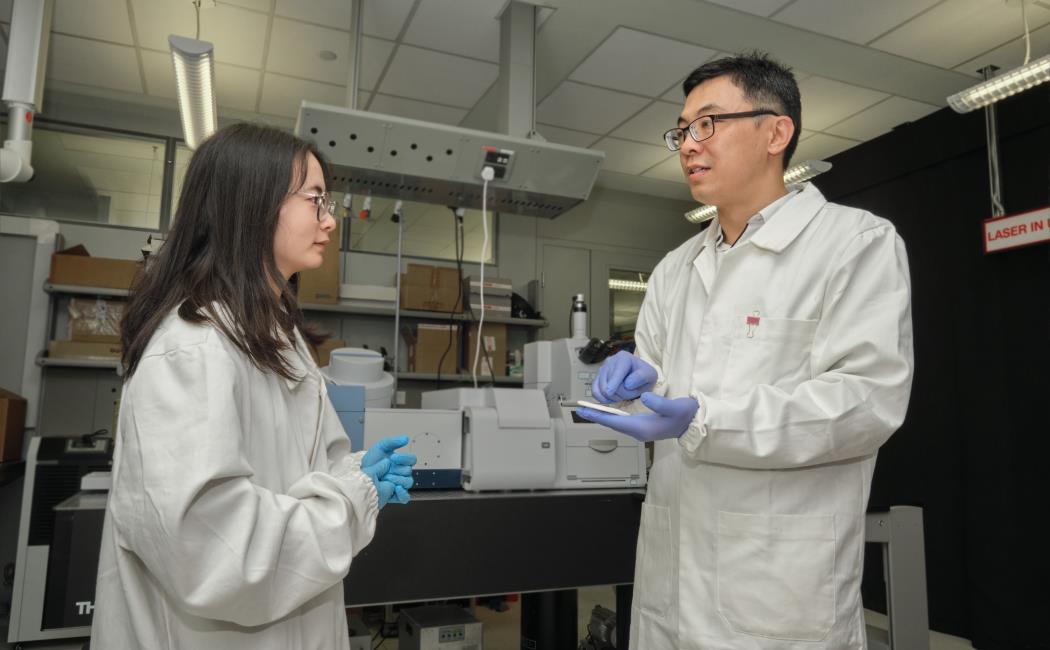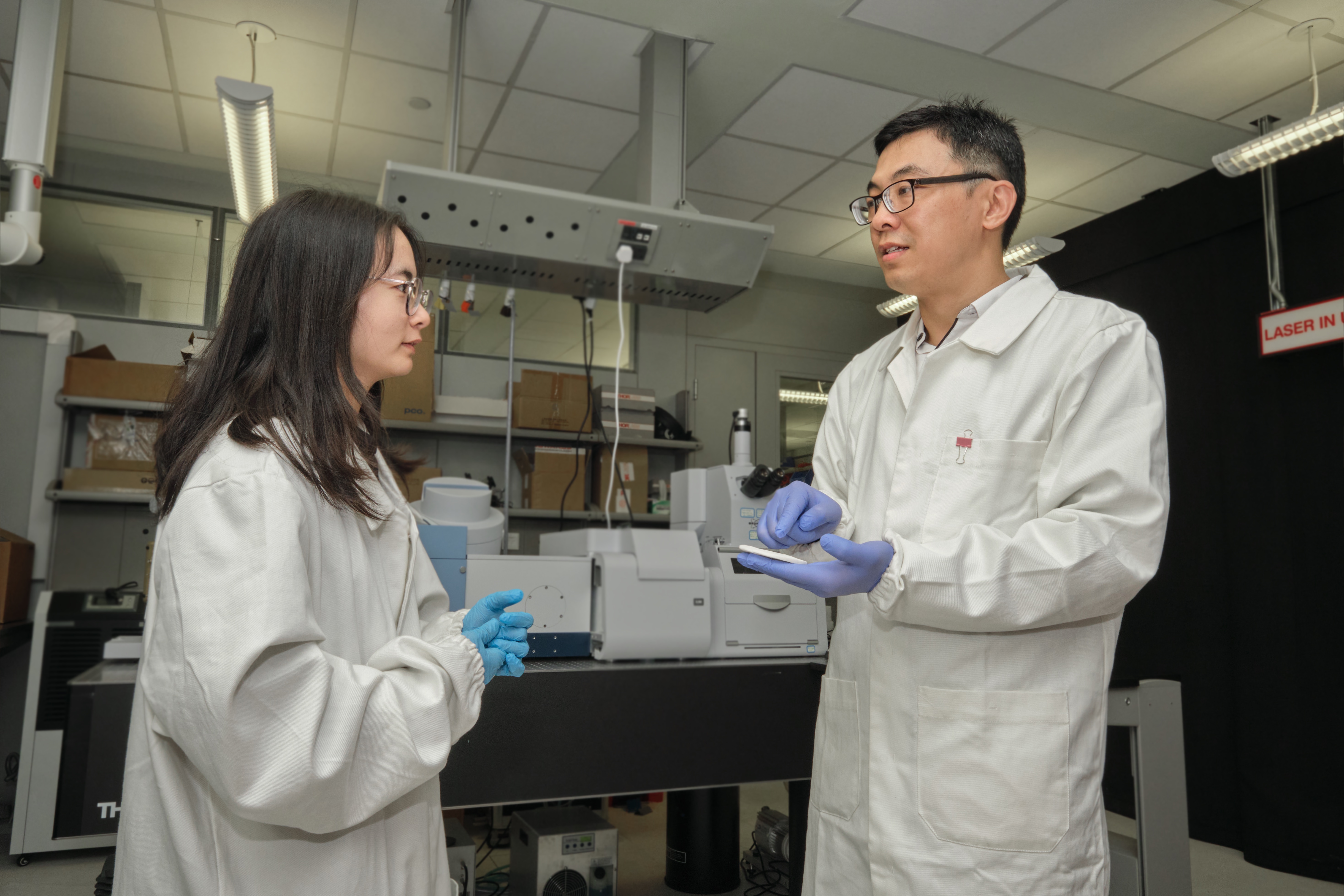


11 January, 2024

Yue Lei (left) and co-workers in Qiaoqiang Gan's (right) group are tackling challenges posed by traditional cooling systems in the face of increasing heatwaves and their impact on energy demand and grids. © 2024 KAUST; Eliza Mkhitaryan.
A superabsorbent polyacrylate film, developed by a KAUST-led team, could provide cost-effective cooling solutions that reduce heat stress, carbon emissions and electricity consumption.article " id="return-reference-1" href="https://discovery.kaust.edu.sa/en/article/23005/a-green-polymer-film-offers-climate-friendly-cooling/#reference-1">[1]
Compressor-based cooling techniques, such as air conditioning systems, are the go-to response to heat stress. However, with global warming intensifying heatwaves, there is now increased energy demand from these traditional cooling systems, which in turn leads to power outages and puts strain on energy grids.
Passive cooling, which relies on little or no energy to dissipate heat, offers an ecofriendly alternative to air conditioning. Evaporative cooling lowers the temperature by using heat from water vaporization. Radiative cooling utilizes materials with high thermal emissivity to release thermal energy into space through the so-called atmospheric window in the infrared range. It also uses highly reflective materials to deflect sunlight.
However, global warming enhances atmospheric moisture, which amplifies the greenhouse effect and reduces the transparency of the atmospheric window. Together, these phenomena make it more challenging for the Earth’s surface to radiate excess heat into space.
“If we find a way to absorb or condense moisture at night and then evaporate it during the day for evaporative cooling, this will be a hybrid enhancement for the passive cooling technique,” says Yanpei Tian, a postdoc in Qiaoqiang Gan’s group.